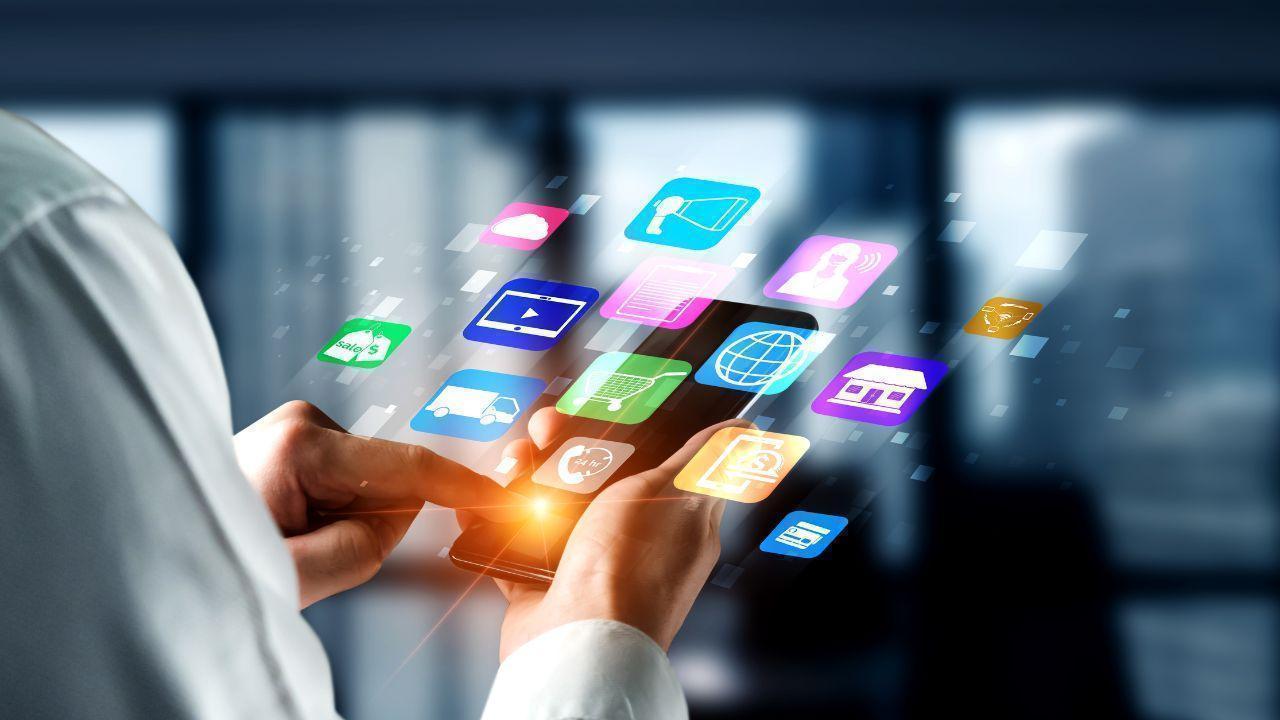
In the ever-changing landscape of education, technology remains a powerful force driving innovation and reshaping classroom experiences. As we venture into 2024, educators and students are embracing a diverse array of cutting-edge tools and technologies that promise to revolutionize learning.
Artificial Intelligence (AI) is revolutionizing education by providing personalized learning experiences tailored to individual student needs. Virtual Reality (VR) and Augmented Reality (AR) transport students to immersive worlds where learning becomes an unforgettable adventure. Gamification transforms education into a fun and engaging experience, making even the toughest subjects enjoyable.
3D Printing empowers students to bring their ideas to life, while robotics and coding education foster critical thinking and problem-solving skills. Cloud computing ensures seamless access to educational resources anytime, anywhere. Internet of Things (IoT) devices create smart classrooms that adapt to student needs in real-time.
Blockchain technology ensures the security and integrity of academic records, while personalized learning platforms customize lessons to each student's unique learning style. Mobile learning apps make studying convenient and accessible, allowing students to learn on the go.
As we embrace these transformative technologies, collaboration between educators and students is key to unlocking their full potential. Together, we can embark on a journey of discovery and innovation, where the possibilities are endless and the future is bright.
Artificial Intelligence (AI) in Education
Artificial Intelligence (AI) is not just a buzzword; it's a game-changer in the field of education. Imagine having a personal tutor who knows exactly how you learn best, what topics you struggle with, and how to help you improve. That's the power of AI in education. By analyzing vast amounts of data, AI algorithms can tailor learning experiences to suit each student's unique needs and preferences. Whether it's adapting the difficulty level of a quiz, recommending additional resources, or providing real-time feedback on assignments, AI can personalize learning in ways that were previously unimaginable.
But AI isn't just about individualized instruction; it's also about enhancing the role of educators. Instead of replacing teachers, AI can empower them by providing valuable insights into student progress and performance. By automating routine tasks like grading and administrative work, AI frees up teachers' time to focus on what really matters – building meaningful connections with students, facilitating discussions, and fostering critical thinking skills.
Moreover, AI is breaking down barriers to education by making learning more accessible and inclusive. For students with disabilities or learning differences, AI-powered tools can provide customized support and accommodations, ensuring that all learners have the opportunity to succeed. Additionally, AI can help bridge the digital divide by providing remote and underserved communities with access to high-quality educational resources and support.
But perhaps the most exciting aspect of AI in education is its potential to transform the way we think about teaching and learning. By harnessing the power of machine learning and natural language processing, AI can create truly immersive and interactive learning experiences. Virtual tutors, intelligent tutoring systems, and chatbots can engage students in meaningful conversations, answer their questions, and provide personalized guidance in real-time.
In essence, AI has the potential to revolutionize education as we know it. But like any technology, its effectiveness depends on how it's used. As we continue to explore the possibilities of AI in education, it's essential to approach its implementation thoughtfully and ethically, ensuring that it enhances, rather than detracts from, the educational experience. With the right approach, AI has the power to unlock new levels of learning, creativity, and innovation, paving the way for a brighter future for students around the world.
Virtual Reality (VR) and Augmented Reality (AR)
Virtual Reality (VR) and Augmented Reality (AR) have emerged as game-changers in the realm of education, transporting students beyond the confines of traditional classrooms into immersive digital worlds. In simple terms, VR completely immerses users in a simulated environment, while AR overlays digital elements onto the real world.
Imagine students stepping back in time to witness historical events firsthand, exploring distant planets, or diving into the depths of the ocean without leaving their seats. That's the magic of VR. By donning a VR headset, students are transported to realistic and interactive environments where they can engage with content in ways that were previously unimaginable.
Similarly, AR enhances the real world by superimposing digital elements onto the physical environment. Picture students dissecting virtual organisms projected onto their lab tables or interacting with 3D models of complex structures right in their classrooms. AR brings learning to life by blending the digital and physical worlds seamlessly.
These immersive technologies cater to different learning styles, making lessons more engaging and memorable. Visual learners benefit from seeing concepts come to life in 3D, while kinesthetic learners thrive in hands-on virtual environments where they can manipulate objects and explore at their own pace.
Moreover, VR and AR foster collaboration and teamwork by allowing students to interact with each other within shared virtual spaces. Whether they're collaborating on a group project or solving problems together in a virtual lab, these technologies promote communication, critical thinking, and cooperation.
In addition to enhancing student engagement, VR and AR also provide valuable opportunities for experiential learning. Instead of simply reading about scientific principles or historical events, students can experience them firsthand, making learning more meaningful and impactful.
Furthermore, VR and AR have practical applications across various subjects and disciplines. From STEM education to history, art, and beyond, these technologies offer endless possibilities for creative and immersive learning experiences.
In conclusion, VR and AR are revolutionizing education by providing immersive, interactive, and experiential learning experiences that engage students in new and exciting ways. By leveraging these transformative technologies, educators can unlock the full potential of their students and prepare them for success in the digital age and beyond.
Gamification is like adding a sprinkle of fun and excitement to the learning process, turning educational tasks into engaging adventures. Picture your typical classroom transformed into a lively game board, where every lesson and activity becomes a thrilling challenge waiting to be conquered.
Instead of traditional methods where students passively absorb information, gamification puts them at the center of the action. It's all about tapping into their natural sense of curiosity and competitiveness, motivating them to actively participate and strive for success.
Think of it as a quest where students earn points, badges, and rewards for completing tasks, answering questions correctly, or mastering new skills. These rewards act as incentives, encouraging students to stay focused, persevere through challenges, and push their limits to achieve their goals.
But gamification isn't just about making learning more enjoyable; it's also about fostering essential skills like problem-solving, critical thinking, and collaboration. Through interactive games and challenges, students learn to think on their feet, adapt to changing circumstances, and work together towards common objectives.
Moreover, gamification encourages a growth mindset, where students view mistakes as opportunities for learning and improvement rather than failures. It promotes a sense of resilience and determination, instilling in students the confidence to tackle even the toughest of challenges head-on.
Incorporating gamification into the classroom doesn't mean turning every lesson into a full-blown game. It's about finding the right balance and using game elements strategically to enhance learning outcomes. Whether it's through digital platforms, board games, or classroom activities, there are endless possibilities for gamifying the learning experience.
By embracing gamification, educators can create dynamic and interactive learning environments that capture students' imaginations and ignite their passion for learning. It's a powerful tool that transforms education into an adventure, where every student has the opportunity to embark on a journey of discovery and growth.
In 2024, 3D printing is becoming a game-changer in education, offering students unparalleled opportunities for hands-on learning and creativity. This innovative technology is making waves across classrooms, bringing abstract concepts to life in a tangible, interactive way.
3D printing, also known as additive manufacturing, allows students to transform digital designs into physical objects by layering materials such as plastic, metal, or resin. This process enables students to bring their ideas and projects to life, making abstract concepts concrete and understandable. For example, instead of merely reading about ancient artifacts or complex molecules, students can create detailed replicas and models to examine and explore.
3D printing is particularly impactful in STEM (Science, Technology, Engineering, and Mathematics) education. It provides students with the tools to prototype engineering designs, conduct scientific experiments, and create models for various projects. Imagine a student designing and printing a custom-fit prosthetic limb for a school project, or engineering students creating scale models of bridges to test structural integrity. These experiences foster critical thinking, problem-solving, and innovation.
Art and design students are also benefiting from 3D printing technology. They can design intricate sculptures, jewelry, and other creative projects, pushing the boundaries of traditional art mediums. This technology encourages experimentation and innovation, allowing students to iterate quickly and refine their ideas without the limitations of traditional fabrication methods.
The real-world applications of 3D printing are vast and varied. Students learning about biology can print detailed anatomical models for study, while those in history classes can create replicas of historical artifacts. In architecture, students can design and print scale models of buildings, enhancing their understanding of structural design and spatial relationships.
One of the key benefits of 3D printing is its ability to engage students through hands-on learning. This tactile approach helps students understand and retain complex information more effectively than traditional methods. By physically interacting with the models they create, students gain a deeper understanding of the subject matter and develop practical skills that are highly valued in the workforce.
3D printing also promotes collaboration and teamwork. Many classroom projects involve group work where students must brainstorm, design, and print models together. This collaborative process teaches essential skills such as communication, cooperation, and project management, preparing students for future professional environments.
As 3D printing technology becomes more affordable and accessible, schools of all sizes and budgets can integrate it into their curricula. Desktop 3D printers are now available at lower prices, making it feasible for educational institutions to provide this technology to their students. Additionally, many online platforms offer free or low-cost 3D design software, further lowering the barriers to entry.
In the rapidly evolving educational landscape, robotics and coding have emerged as powerful tools that are shaping the way students learn and engage with technology. These innovative technologies are not only enhancing traditional STEM (Science, Technology, Engineering, and Mathematics) education but are also equipping students with essential 21st-century skills. Let's dive deeper into how robotics and coding are transforming classrooms and preparing students for the future.
Robotics education introduces students to the exciting world of designing, building, and programming robots. This hands-on approach makes abstract concepts tangible and understandable. By working with robots, students can see the real-world applications of the theories they learn in class, which enhances their comprehension and retention.
Coding, or programming, is becoming an indispensable skill in today's digital world. Learning to code empowers students to create their own software applications, games, and websites, transforming them from passive consumers of technology to active creators.
Integrating robotics and coding into the curriculum can seem daunting, but many schools are finding innovative ways to do so. Here are some approaches:
One of the significant advantages of robotics and coding education is its potential to be inclusive and accessible. Educational kits and platforms are designed to be user-friendly and cater to a wide range of skill levels, from beginners to advanced learners.
In the rapidly evolving educational landscape, cloud computing stands out as a transformative force. By shifting traditional learning environments into the digital realm, cloud technology is changing how students access information, collaborate on projects, and interact with their teachers. Let's dive deeper into how cloud computing is reshaping classrooms and making education more flexible, efficient, and inclusive.
One of the most significant advantages of cloud computing in education is the seamless access to a vast array of educational resources. Gone are the days when students had to rely solely on physical textbooks and materials. With cloud-based platforms, students can access a plethora of digital textbooks, research papers, videos, and interactive content from anywhere, at any time. This not only enhances learning but also ensures that students can stay engaged even outside the classroom.
Cloud computing fosters a collaborative learning environment by enabling real-time collaboration and communication among students and teachers. Tools like Google Classroom, Microsoft Teams, and other cloud-based learning management systems allow students to work together on projects, share notes, and receive instant feedback from their instructors. This enhanced collaboration helps build teamwork skills and encourages peer-to-peer learning.
Managing vast amounts of educational data can be daunting, but cloud computing simplifies this process. Schools and universities can store student records, grades, and administrative data securely on the cloud, ensuring easy access and reducing the risk of data loss. Moreover, cloud-based data management systems enable educators to track student progress and performance more effectively, providing insights that can inform teaching strategies and interventions.
Implementing cloud computing can be a cost-effective solution for educational institutions. Instead of investing in expensive hardware and IT infrastructure, schools can leverage cloud services that offer scalable solutions based on their needs. This cost-effectiveness allows institutions to allocate resources to other critical areas, such as hiring more teachers or investing in advanced educational tools.
The shift to remote and hybrid learning, accelerated by the COVID-19 pandemic, has highlighted the importance of cloud computing in maintaining continuity in education. Cloud-based platforms have made it possible for students to attend virtual classes, submit assignments, and participate in discussions from the safety of their homes. This flexibility ensures that learning can continue uninterrupted, regardless of physical location.
Cloud computing plays a crucial role in promoting inclusivity and accessibility in education. Students with disabilities can benefit from cloud-based tools that offer assistive technologies, such as screen readers, voice recognition software, and customizable interfaces. Additionally, cloud platforms can provide access to educational content in multiple languages, catering to diverse student populations and ensuring that no one is left behind.
One of the key benefits of cloud computing is its scalability. Educational institutions can easily scale their cloud services up or down based on their requirements. This scalability ensures that schools can handle varying levels of demand, such as increased traffic during exam periods or the addition of new courses and programs. Furthermore, cloud service providers regularly update their offerings, ensuring that institutions always have access to the latest technologies without the need for constant hardware upgrades.
Data security and privacy are paramount concerns in the digital age. Cloud service providers implement robust security measures to protect sensitive educational data from cyber threats and breaches. Features such as data encryption, multi-factor authentication, and regular security audits ensure that student information remains secure. By partnering with reputable cloud providers, educational institutions can build trust with students and parents, assuring them that their data is in safe hands.
Imagine a classroom where devices and objects communicate seamlessly, enhancing the learning experience. This is the reality of Internet of Things (IoT) devices in education, a technological advancement transforming how students and teachers interact with their environment and each other. IoT devices are connecting classrooms to a vast network of data and insights, making education more interactive, efficient, and personalized.
Smart classrooms equipped with IoT devices create an interconnected ecosystem where everything from lighting to temperature can be controlled automatically based on the time of day or the number of students present. Smartboards and interactive displays can connect to students' devices, enabling real-time collaboration and engagement. This interconnected environment fosters a more comfortable and conducive learning space, enhancing the overall educational experience.
IoT devices such as smart sensors, wearables, and interactive whiteboards are revolutionizing the way lessons are delivered and received. For example, smart sensors can track student engagement and provide instant feedback to teachers about which parts of the lesson are most effective. Wearables like smartwatches can monitor students' physical activity and even their emotional states, helping educators understand their needs better. Interactive whiteboards connected to the cloud allow teachers to share notes and resources instantly with students, making learning more dynamic and engaging.
One of the most significant advantages of IoT in education is the ability to collect and analyze vast amounts of data. IoT devices can track students' performance, attendance, and participation, providing valuable insights into their learning patterns and behaviors. This data-driven approach allows teachers to identify areas where students might be struggling and tailor their instruction accordingly. For instance, if a particular student is consistently having trouble with a specific concept, the teacher can provide additional resources or one-on-one support to address the issue promptly.
IoT devices also play a crucial role in enhancing safety and security within educational institutions. Smart security systems equipped with cameras and sensors can monitor school premises in real-time, alerting authorities to any unusual activity. IoT-enabled ID cards can track student attendance and movements, ensuring that students are safe and accounted for at all times. These measures not only protect students but also give parents peace of mind knowing their children are in a secure environment.
Implementing IoT devices in schools can lead to significant energy savings. Smart thermostats, lighting systems, and energy meters can monitor and control energy usage, reducing waste and lowering utility bills. For example, lights and air conditioning can be programmed to turn off automatically when classrooms are empty. This not only saves money but also promotes sustainable practices within the school community.
IoT devices enable a more personalized learning experience by adapting to individual student needs. Smart desks and chairs can adjust to the ergonomic needs of each student, providing a comfortable learning environment. IoT platforms can offer personalized content and activities based on students' learning preferences and performance data. This tailored approach helps students stay engaged and motivated, ultimately improving their academic outcomes.
IoT devices bring real-world applications into the classroom, making learning more relevant and practical. For example, students can use IoT kits to build and program their own devices, learning valuable skills in coding, engineering, and problem-solving. Projects like creating a smart garden with IoT sensors to monitor soil moisture and plant health can teach students about biology, technology, and sustainability in an integrated manner.
Blockchain technology, known primarily for its role in cryptocurrencies like Bitcoin, is making waves in various industries, including education. As we dive into 2024, the use of blockchain in education is becoming more prevalent, promising to revolutionize the way we manage and verify academic credentials, enhance transparency, and ensure the security of educational records. Here’s a closer look at how blockchain is transforming education.
One of the most significant impacts of blockchain in education is in the realm of credentialing. Traditional paper-based certificates and transcripts are prone to forgery and loss. Blockchain technology offers a robust solution by creating digital credentials that are secure, immutable, and easily verifiable.
When an educational institution issues a certificate using blockchain, it generates a unique digital record that is stored on a decentralized ledger. This record cannot be altered or tampered with, ensuring the authenticity of the credential. Employers and other institutions can quickly verify the legitimacy of the credentials without having to rely on third-party verification services, reducing time and costs associated with the process.
Blockchain’s decentralized nature ensures that no single entity has control over the entire database, making it transparent and resistant to corruption. This transparency is particularly valuable in education, where trust in the integrity of academic records is paramount.
For example, when a student completes a course or earns a degree, the details are recorded on the blockchain. This information is then accessible to authorized parties, such as potential employers, in a secure and transparent manner. This not only builds trust but also helps combat issues like degree fraud and misrepresentation.
Managing student records is a complex task that involves tracking grades, attendance, extracurricular activities, and more. Blockchain can simplify this process by creating a unified, secure, and permanent record for each student. This record follows the student throughout their educational journey and even into their professional career.
With blockchain, students can have a lifelong digital portfolio that showcases their achievements, skills, and qualifications. This is particularly beneficial for lifelong learners who engage in continuous education and professional development. Each course or certification they complete can be added to their blockchain record, creating a comprehensive and verifiable educational history.
Blockchain technology also empowers students by giving them control over their own educational records. Instead of relying on institutions to issue and verify credentials, students can manage and share their achievements directly. This shift not only streamlines the verification process but also enhances student autonomy and ownership of their educational journey.
For instance, when applying for jobs or further education, students can provide potential employers or institutions with access to their blockchain-based credentials. This eliminates the need for cumbersome paperwork and speeds up the application process. Moreover, it ensures that students’ qualifications are accurately represented, enhancing their prospects.
The rise of decentralized learning platforms is another exciting development facilitated by blockchain. These platforms allow educators and learners to connect directly, bypassing traditional educational institutions. Blockchain ensures that all transactions and interactions on these platforms are secure and transparent.
Educators can issue blockchain-based certificates for completed courses, which students can add to their digital portfolios. This fosters a more flexible and inclusive education system, where learning is not confined to traditional classrooms and institutions.
Personalized learning platforms are redefining the way students learn by creating customized educational experiences. These platforms use data analytics and AI algorithms to adapt content, pacing, and assessments to the unique needs of each student. Imagine a classroom where every student has a learning path tailored just for them. That’s the power of personalized learning platforms.
- Tailored Learning Experiences:
Personalized learning platforms recognize that every student is unique, with different strengths, weaknesses, and learning styles. These platforms assess each student’s abilities and preferences, then design a curriculum that suits them best. This means a student who excels in math but struggles with reading can get more challenging math problems while receiving additional support in reading.
- Real-Time Feedback:
One of the standout features of personalized learning platforms is the ability to provide real-time feedback. As students work through lessons, the platform tracks their progress and offers instant feedback on their performance. This helps students understand their mistakes and learn from them immediately, promoting continuous improvement.
- Engaging Content:
These platforms often incorporate a variety of multimedia resources—videos, interactive simulations, quizzes, and games—to make learning engaging and fun. This diverse content keeps students interested and motivated, making the learning process more enjoyable.
- Teacher Support:
Personalized learning platforms are not just for students; they also support teachers by providing insights into each student’s progress. Teachers can quickly identify who needs extra help and who is ready for more advanced material. This allows educators to spend more time on personalized instruction and less on administrative tasks.
- Accessibility:
By making educational resources available online, personalized learning platforms ensure that students can learn anytime, anywhere. This flexibility is especially beneficial for students with varying schedules or those who need to catch up on missed lessons.
In today's fast-paced world, mobile learning apps are transforming education by making it more accessible, flexible, and personalized. These apps have become indispensable tools for students and educators, offering a wealth of resources at their fingertips. Let's dive into how mobile learning apps are revolutionizing classrooms and reshaping the educational landscape.
- Anytime, Anywhere Learning:
Mobile learning apps break the traditional classroom barriers, allowing students to learn anytime, anywhere. Whether on the bus, at home, or during a break, students can access educational content with just a few taps on their smartphones or tablets. This flexibility is a game-changer, especially for busy students juggling multiple responsibilities.
- Personalized Learning Experiences:
One of the most significant advantages of mobile learning apps is their ability to personalize education. By using data analytics and AI algorithms, these apps adapt to each student's learning pace and style. This means that whether a student is a visual, auditory, or kinesthetic learner, the app can tailor the content to suit their needs, enhancing understanding and retention.
- Interactive and Engaging Content:
Gone are the days of monotonous lectures and static textbooks. Mobile learning apps offer interactive and engaging content through videos, quizzes, simulations, and games. These features make learning more enjoyable and help students grasp complex concepts more easily. For instance, language learning apps use gamification techniques to make vocabulary acquisition fun and competitive.
- Collaboration and Connectivity:
Mobile learning apps facilitate collaboration and connectivity among students and teachers. Features such as discussion forums, group chats, and collaborative projects allow students to work together, share ideas, and provide feedback. This interconnectedness fosters a sense of community and enhances the overall learning experience.
- Instant Feedback and Assessment:
With mobile learning apps, students receive instant feedback on their performance. Interactive quizzes and assessments provide immediate results, helping students identify areas of improvement and track their progress. This real-time feedback is crucial for maintaining motivation and ensuring continuous learning.
- Access to a Wealth of Resources:
Mobile learning apps open the door to a vast array of resources, from e-books and academic articles to instructional videos and podcasts. This extensive library of materials ensures that students have all the information they need at their fingertips, promoting independent learning and exploration.
- Cost-Effective Education:
Mobile learning apps can significantly reduce the cost of education. Many apps offer free or affordable access to high-quality educational content, making it possible for students from all backgrounds to benefit from top-notch learning resources. This democratization of education helps bridge the gap between privileged and underserved communities.
- Parental Involvement:
Many mobile learning apps include features that allow parents to monitor their child's progress and stay involved in their education. This transparency fosters a collaborative environment where parents, teachers, and students work together to achieve educational goals.
- Continuous Professional Development for Educators:
Mobile learning apps are not just for students; they also offer professional development opportunities for teachers. Educators can access training modules, instructional videos, and peer support networks to enhance their teaching skills and stay updated with the latest educational trends.
Understanding that internet connectivity can be an issue, many mobile learning apps offer offline access to content. This ensures that students can continue learning even without an internet connection, making education truly accessible to all.
DXB News Network showcases 2024's educational tech highlights, including AI, VR/AR, 3D Printing, Robotics/Coding, Cloud Computing, IoT Devices, Blockchain, Personalized Learning Platforms, Mobile Learning Apps, and Gamification. Readers are encouraged to conduct further research for implementation. DXB News Network bears no liability for decisions based on this information.
Information presented by DXB News Network is for informational purposes only. Readers should research further and consult professionals for implementation guidance. DXB News Network is not liable for decisions made based on this information.
#trending #latest #EdTech2024 #AIinEducation #VR #AR #3DPrinting #Robotics #Coding #CloudComputing #IoT #Blockchain #PersonalizedLearning #MobileLearning #Gamification #DXBNewsNetwork #breakingnews #worldnews #headlines #topstories #globalUpdate #dxbnewsnetwork #dxbnews #dxbdnn #dxbnewsnetworkdnn #bestnewschanneldubai #bestnewschannelUAE #bestnewschannelabudhabi #bestnewschannelajman #bestnewschannelofdubai #popularnewschanneldubai

During the visit, His Highness toured the exhibition, visiting various local and international pavilions...Read More.

In the first ten months of 2024, Dubai Real Estate Corporation (DREC) and its subsidiary, Wasl Group, saw a 28% rise in revenues compared to 2023...Read More.
 Salah inspires Liverpool comeback to extend lead to eight points at Southampton
Salah inspires Liverpool comeback to extend lead to eight points at Southampton
Liverpool came from 2-1 down as Salah scored twice in the second half, reaching 10 goals
 Nine-Year-Old’s Model of Hajar Mountains Earns Recognition from Dubai Culture & Arts Authority.
Nine-Year-Old’s Model of Hajar Mountains Earns Recognition from Dubai Culture & Arts Authority.
educational journey by nine-year-old Henry Zielinski, a Grade 3 student at Clarion School, underscor
 Muhammad Hamza Raja: A Bodybuilder Who Inspires the World
Muhammad Hamza Raja: A Bodybuilder Who Inspires the World
Muhammad Hamza Raja’s story is a perfect example of someone who has embraced this spirit.
 Yeh Kaali Kaali Ankhein 2 Review: Tahir Raj Bhasin Shines
Yeh Kaali Kaali Ankhein 2 Review: Tahir Raj Bhasin Shines
Yeh Kaali Kaali Ankhein 2 continues the thrilling story with fresh twists and new challenges.
 Manoj Bajpayee Discusses Indie Cinema Crisis & Why Bollywood Acting Is the Toughest Job
Manoj Bajpayee Discusses Indie Cinema Crisis & Why Bollywood Acting Is the Toughest Job
The acclaimed actor candidly spoke about his career, fame, and experiences in films.
Khaled bin Mohamed bin Zayed visits 6th Abu Dhabi International Boat Show

During the visit, His Highness toured the exhibition, visiting various local and international pavilions
Dubai Real Estate Corporation Reports 28% Revenue Growth

In the first ten months of 2024, Dubai Real Estate Corporation (DREC) and its subsidiary, Wasl Group, saw a 28% rise in revenues compared to 2023
4th Al Sila Marine Festival to Be Held in Al Dhafra Under Hamdan bin Zayed

The Abu Dhabi Heritage Authority and the Abu Dhabi Marine Sports Club are organising the event
The Rise of Sustainable Clothing: How Eco-Friendly Fashion is Trending

Discover the growing trend of sustainable fashion for a better future
Egypt and Saudi Arabia wrap up ‘Piercing Arrow 2024’ joint exercise

The training took place in Egypt's Southern Military Zone and the Southern Fleet's operational area, with observers from allied and friendly nations
Top TikTok Beauty Products for a Glowing Look

Discover top TikTok beauty products for a glowing, radiant look
2nd Abu Dhabi Maritime Awards Honors Top Marinas in MENA and Türkiye

The Pearl Island Marina in Qatar won silver, while bronze was awarded to Abu Dhabi Marine in the UAE
Abu Dhabi Kingfish Championships to Feature AED 4.3M+ Prize Pool

The event aims to preserve maritime traditions and promote sustainable, regulated traditional fishing, reflecting values of authenticity
How Technology is Changing The Future of Work and Education

Discover how technology is transforming work and education for all
Nita Ambani stuns at IPL auction in tweed pantsuit and diamond brooch

Nita Ambani wowed the crowd at the IPL Auction 2025 in a stunning navy blue tweed suit. The price? Absolutely jaw-dropping
© DNN. All Rights Reserved.